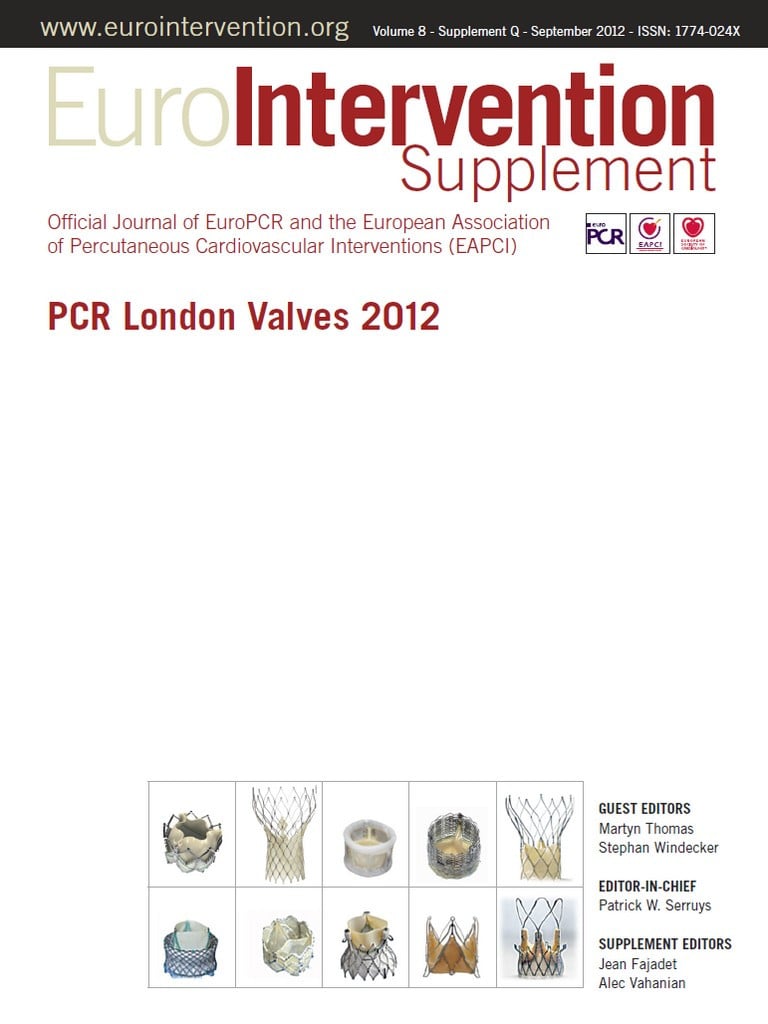![]()
Risk assesment in TAVI including valve-in-valve
Is EuroSCORE II better than EuroSCORE in predicting mortality after transcatheter aortic valve implantation?
Aims: The European System for Cardiac Operative Risk Evaluation II (ESII) has been developed recently to improve the predictive value of the original logistic EuroSCORE (LES). The purpose of this study was to examine the performance of the ESII in patients undergoing transcatheter aortic valve implantation (TAVI).
Methods and results: Between October 2006 and November 2011, 453 consecutive patients with severe aortic stenosis undergoing TAVI using both the Edwards valve and CoreValve were included in the current analysis. The performance of ESII, LES and Society of Thoracic Surgeons Predicted Risk of Mortality score (STS) were evaluated. Mean age was 83.1±6.4. The Edwards valve was used in 382 (84.3%) of the cohort. Observed 30-day mortality was 12.8%. The mean ESII, LES and STS were 8.1±5.2, 22.4±12.1, 8.1±6.0, respectively. Moderate correlation was observed in both ESII vs. LES (R=0.65, p<0.01), ESII vs. STS (R=0.47, p<0.01). ESII best predicted 30-day mortality compared to LES and STS (the area under the receiver operating characteristic curve [AUC]: 0.68, 0.65 and 0.60 respectively). In the TF cohort, ESII was better in predicting 30-day mortality compared to LES and STS (AUC=0.74, 0.61, 0.60, respectively).
Conclusions: Although the ESII was inadequately calibrated for predicting 30-day mortality, the ESII demonstrated better predictive performance after TAVI compared to the LES and STS especially in the TF cohort.

